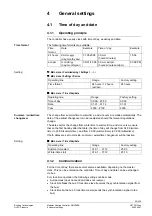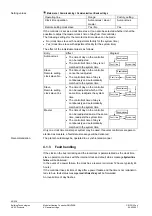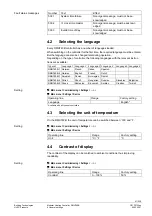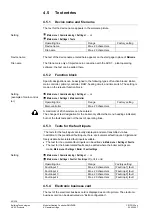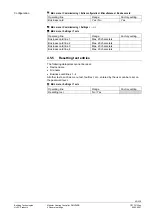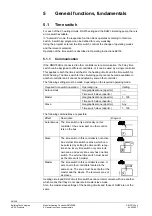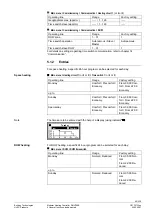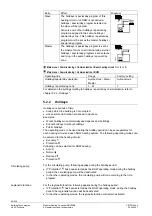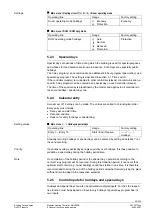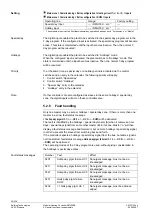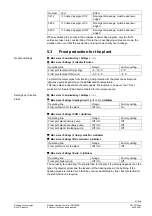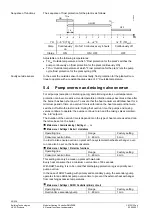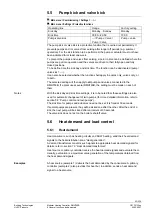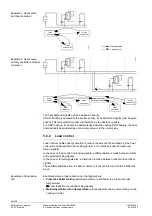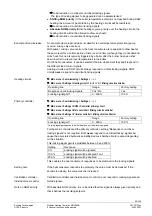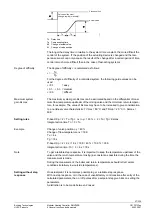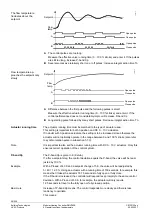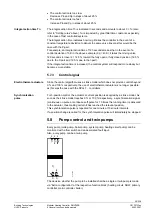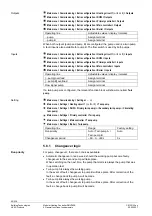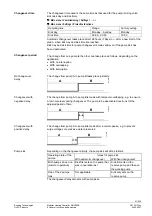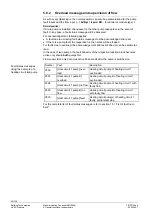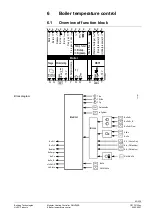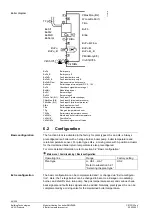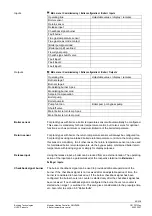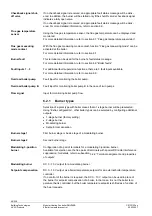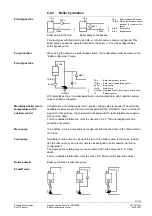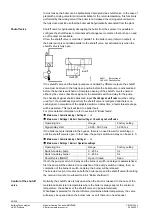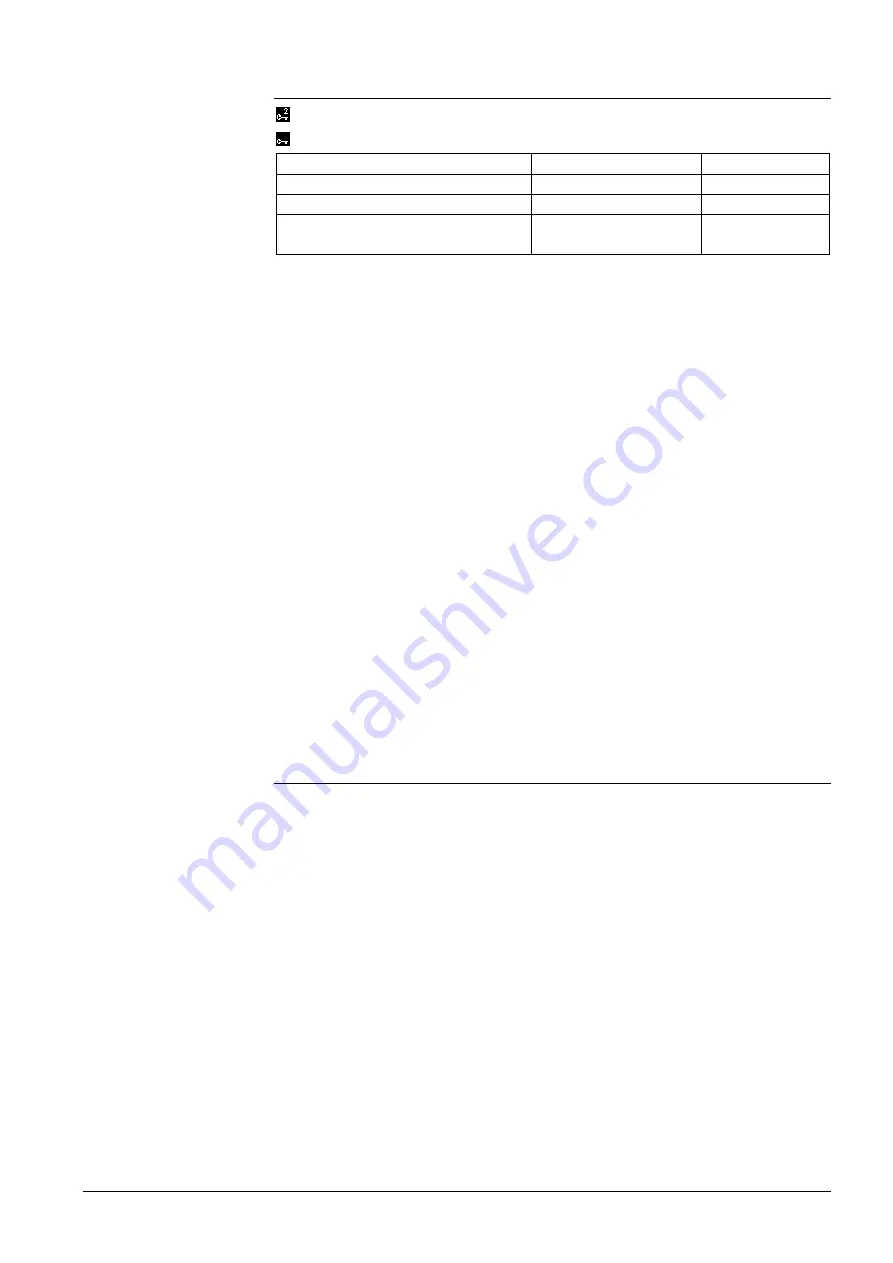
53/238
Building Technologies
Modular Heating Controller RMH760B
CE1P3133en
HVAC Products
5 General functions, fundamentals
05.02.2007
5.5
Pump kick and valve kick
Main menu > Commissioning > Settings > …
or
Main menu > Settings > Protective functions
Operating line
Range
Factory setting
Kick day
Monday…Sunday
Monday
Kick time
00:00…23:59
10:00
Pump/valve kick
--- / Pump + Valve /
Pump / Valve
Pump + valve
The pump kick or valve kick is a protective function that is carried out periodically. It
prevents pumps and / or valves from seizing after longer off periods (e.g. summer
operation). For the kick function to be performed, the pump or actuator must not have
been activated for at least one week.
To prevent the pumps and valves from seizing, a point in time can be defined where the
pumps are put into operation and the valves are driven to their fully open and fully
closed positions.
To be defined are the kick day and kick time. The function can be deactivated (pump /
valve kick = ---).
It can also be selected whether the function shall apply to pumps only, valves only, or
to both.
The selected setting will then apply to
all
pumps and valves connected to the
RMH760B. If a plant uses several RMH760B, the setting must be made on each of
them.
With the kick day and kick time settings, it is to be noted that these settings are also
used for automatic changeover of twin pumps (for more detailed information, refer to
section 5.8 “Pump control and twin pumps”).
The kick time for pumps and actuators need not be set; it is fixed at 30 seconds.
If several pumps are present, they will be kicked one after the other. After the end of a
kick, the next pump will be kicked after an interval of 30 seconds.
The valve kick does not act on the boiler’s shutoff valve.
5.6
Heat demand and load control
5.6.1 Heat
demand
Heat consumers, such as heating circuits and DHW heating, send their heat demand
signals to the heat distribution zone “Heat generation”.
A demand transformer converts such signals to appropriate heat demand signals (for
details, refer to section 7.3 “Heat demand transformer”.
Heat source or primary controller receive the heat demand signals and evaluate them.
Usually, evaluation is a maximum value generation of the temperatures obtained from
the heat demand signals.
A heat source (example 1) delivers the heat demanded by the consumers. A primary
controller (example 2) also provides this heat but, in addition, sends a heat demand
signal to a heat source.
Notes
Examples

